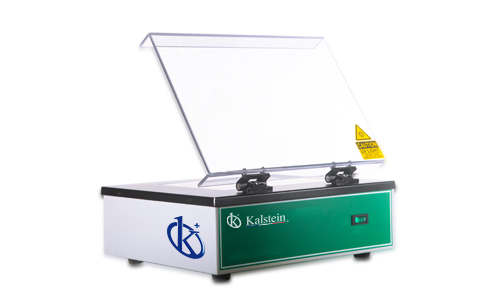In the dynamic world of scientific and biomedical research, the transilluminator has emerged as an indispensable tool for laboratory equipment. Also known as a background illuminator, this device has become essential for visualizing and documenting the results of molecular biology experiments, such as gel electrophoresis.
A transilluminator uses ultraviolet (UV) light to illuminate agarose or polyacrylamide gels impregnated with fluorescent dyes. When the gel is placed on the illumination panel of the transilluminator, traces of fluorescently labeled DNA, RNA or proteins in the gel stand out against the dark background, allowing them to be observed and analyzed.
Optimal handling of the gel transilluminator
To maximize the benefits of the transilluminator in research and minimize the likelihood of damage from UV radiation, it is important to use it correctly. First, always remember to wear personal protective equipment, such as UV safety goggles and gloves, to avoid exposure to UV light. Likewise, it is advisable to use a plastic cover between the gel and the surface of the highlighter to avoid possible contamination and damage.
Also, be sure to select the correct UV light intensity for your specific experiment. Some background illuminators offer a choice of three wavelengths: the highest wavelength, usually 365nm, is less damaging to nucleic acids, but also provides less sensitivity. On the other hand, shorter wavelengths offer higher sensitivity, but at the cost of potential damage to samples.
How the transilluminator increases productivity
Operating a transilluminator efficiently can dramatically increase productivity in a laboratory. First, by visualizing and documenting experiments more clearly and accurately, the transilluminator can save hours of labor, avoiding the need to repeat experiments that are difficult to reproduce.
Furthermore, modern transilluminators often come equipped with additional features, such as the ability to adjust light intensity and the option to switch between different light sources (e.g. white light for non-fluorescent dyes), which can expand their applications in the laboratory and thus maximize operational efficiency.
Kalstein Solutions
In conclusion, efficient use of a transilluminator can result in significant savings of time and resources, which translates into increased productivity in the laboratory. By understanding how it works and practicing safe and efficient handling of this tool, researchers can harness its full potential to advance their scientific studies.
As a manufacturer of laboratory equipment, Kalstein is pleased to offer high-end products, with updated design and advanced technology; know our transilluminators HERE, you will find the YR models that are available for purchase, we also have a new 3D platform that has unlimited versatilities, present in over thirty countries worldwide, publish with us without language restrictions, with shipping plans, be seen, you are more.

